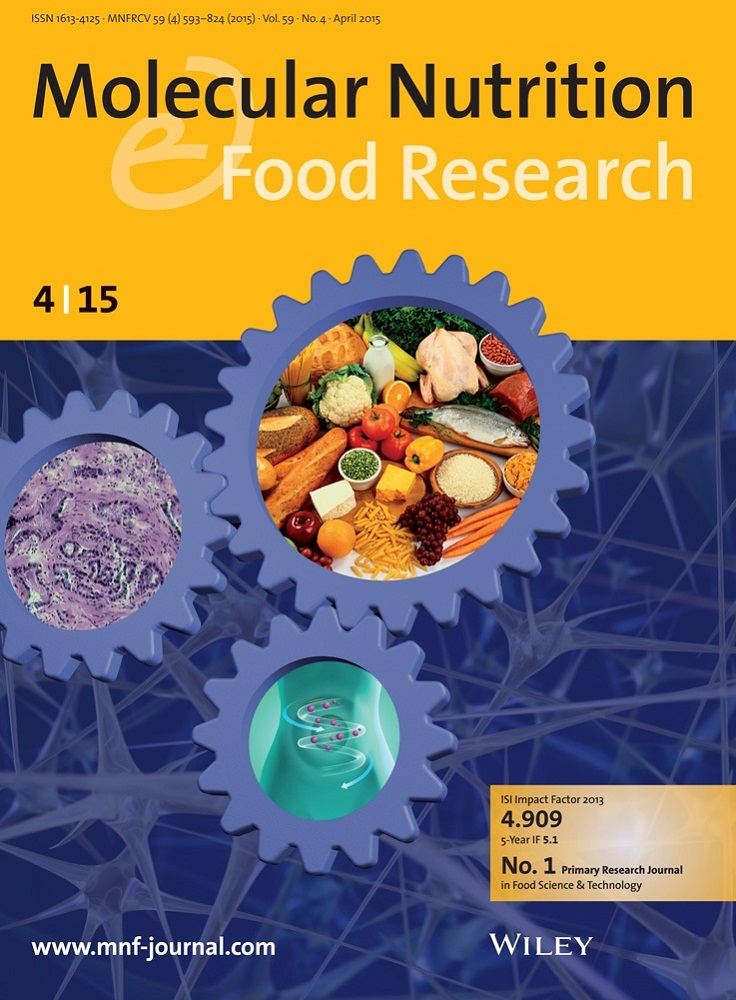Ver ítem
- xmlui.general.dspace_homeCentros Regionales y EEAsCentro Regional Mendoza - San JuanEEA La ConsultaArtículos científicosxmlui.ArtifactBrowser.ItemViewer.trail
- Inicio
- Centros Regionales y EEAs
- Centro Regional Mendoza - San Juan
- EEA La Consulta
- Artículos científicos
- Ver ítem
Catechin and quercetin attenuate adipose inflammation in fructose‐fed rats and 3T3‐L1 adipocytes
Resumen
Scope
This study evaluated the capacity of dietary catechin (C), quercetin (Q), and the combination of both (CQ), to attenuate adipose inflammation triggered by high fructose (HFr) consumption in rats and by tumor necrosis factor alpha (TNF‐α) in 3T3‐L1 adipocytes.
Methods and results
In rats, HFr consumption for 6 wk caused dyslipidemia, insulin resistance, reduced plasma adiponectin, adiposity, and adipose tissue inflammation. Dietary supplementation
[ver mas...]
Scope
This study evaluated the capacity of dietary catechin (C), quercetin (Q), and the combination of both (CQ), to attenuate adipose inflammation triggered by high fructose (HFr) consumption in rats and by tumor necrosis factor alpha (TNF‐α) in 3T3‐L1 adipocytes.
Methods and results
In rats, HFr consumption for 6 wk caused dyslipidemia, insulin resistance, reduced plasma adiponectin, adiposity, and adipose tissue inflammation. Dietary supplementation with 20 mg/kg/day of C, Q, and CQ improved all these parameters. In 3T3‐L1 adipocytes, C and Q attenuated TNF‐α‐induced elevated protein carbonyls, increased proinflammatory cytokine expression (MCP‐1, resistin), and decreased adiponectin. The protective effects of C and Q on adipose inflammation are in part associated with their capacity to (i) decrease the activation of the mitogen‐activated kinases (MAPKs) JNK and p38; and (ii) prevent the downregulation of PPAR‐γ. In summary, C and Q, and to a larger extent the combination of both, attenuated adipose proinflammatory signaling cascades and regulated the balance of molecules that improve (adiponectin) or impair (TNF‐α, MCP‐1, resistin) insulin sensitivity.
Conclusion
Together, these findings suggest that dietary Q and C may have potential benefits in mitigating MetS‐associated adipose inflammation, oxidative stress, and insulin resistance.
[Cerrar]

Autor
Vazquez Prieto, Marcela Alejandra;
Bettaieb, Ahmed;
Rodriguez Lanzi, Cecilia;
Soto Vargas, Verónica Carolina;
Perdicaro, Diahann Jeanette;
Galmarini, Claudio Romulo;
Haj, Fawaz G.;
Miatello, Roberto Miguel;
Oteiza, Patricia I.;
Fuente
Molecular nutrition and food research 59 (4) : 622-633. (April 2015)
Fecha
2015-04
Editorial
Wiley
ISSN
1613-4125
1613-4133 (Online)
1613-4133 (Online)
Formato
pdf
Tipo de documento
artículo
Palabras Claves
Derechos de acceso
Restringido
 Excepto donde se diga explicitamente, este item se publica bajo la siguiente descripción: Creative Commons Attribution-NonCommercial-ShareAlike 2.5 Unported (CC BY-NC-SA 2.5)
Excepto donde se diga explicitamente, este item se publica bajo la siguiente descripción: Creative Commons Attribution-NonCommercial-ShareAlike 2.5 Unported (CC BY-NC-SA 2.5)

